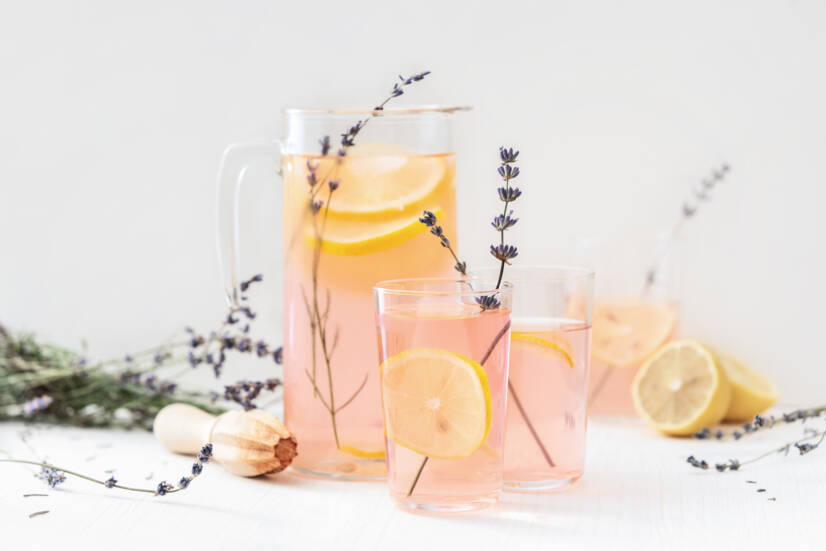- Health from herbs - proven recipes of a popular herbalist (Anna Kopáčová)
- How to grow and process herbs from the Czech garden (Petra Rubášová)
- Herbarium of Medicinal Plants, Volume 3 (Jíří Janča, Josef A. Zentrich)
Lavender: what are its effects and how to grow it?

Lavender and its products are very popular for their scent, but also for their health benefits.
Characteristics
It is a very aromatic plant that is not too demanding to grow. Besides being grown for its beautiful scent, it also pleases us with its appearance. It is also an ornamental herb.
It needs plenty of sun and warmth. When it has enough of both, it grows from 20 to 60 cm.
The beautiful purple flowers bloom especially in July and August. This is also the time when lavender fields are most popular. Tuscany, Provence and south-eastern Europe are particularly famous.
The flowers contain essential oils, bitter substances, resins and tannins along with other useful substances.
It is a very popular ingredient for problems with insomnia, depression, anxiety and stress.
Internal use
It is popular in folk medicine especially for problems with falling asleep, restlessness or nervous tension. It also helps with digestive problems and gastric neurosis.
The tea also brings relief from heatstroke.
It is beneficial for any neurological problems. Lavender oil in various forms, such as tea or capsules, helps relieve anxiety when taken regularly.
It even helps in premenstrual syndrome.
In cooking, it goes well with roasted and grilled meats. It also tastes great with mushroom dishes or in soups.
Chefs like to use it in sauces, salads, dressings and even pasta recipes. However, it is most popular in combination with sweet desserts.
It can be used both as an ingredient and as a garnish in dishes.
Drink lovers will also welcome it in their cocktails. It can be used in mixed drinks, champagne or lemonade. Also in the form of syrup or fresh or dried stems with flowers.
External use
Lavender oil is useful in the external treatment of circulatory disorders, especially when used as an ingredient in massage oil applied to the hands, feet and face.
It is popularly used by people with rheumatic pains, migraines and inflammation of the nerves. It is recommended in this case to use extract and compresses from it.
It is best to use the flowers or oil in the form of wraps or even the aforementioned hot baths. It is also advisable to use a tincture that is massaged into the problem areas.
It can also provide relief to irritated mucous membranes after hay fever. In this case, it is advisable to inhale the flower extract in hot water. It is recommended to inhale the scent several times a day.
Applying lavender packs also helps people with eczema.
Massaging lavender oil into the scalp regularly can also help promote hair growth.
Lavender flowers repel aphids. This is useful information especially for growers.
Bags of dried flowers are used in the closet to keep moths out of clothes.
The scent of the flowers also repels ticks or bedbugs.
Thus, in summer it is a secret fighter against annoying insects in the form of repellent.
Aromatherapy
Lovers of fragrance oils will also be familiar with lavender oil. It helps to relax, as an ingredient in a scented bath or even in a relaxing bath.
A great home trick is also to drip a few drops into the vacuum cleaner, so the home will smell fresh after every vacuum.
You can also use a sachet of flowers to hide under your pillow for a good night's sleep as part of your aromatherapy.
Planting and growing
Lavender can be grown from seed or from a pot. It is best planted in spring or autumn. As it is a perennial, it is not so demanding to grow in indoor or outdoor conditions.
From seed it is a little more challenging, but skilled gardeners can certainly manage it. A good, permeable soil is important for this method of growing. A mixture of sand can also be used, especially in the top. Germination can take several weeks, so patience is needed. The soil should be kept warm and moist at all times.
Growing in a pot is less demanding, although lavender requires good, airy soil that should never be left dry.
It is mainly planted in the garden in spring, when it is humid and not yet so hot. It can also be planted in autumn, but should be protected from frost.
It is best to plant older lavenders in the garden as they have a better chance of taking hold.
Planting in a sunny, warm location is recommended, but not in direct sun, which can burn and dry it out.
Interesting resources
Related










